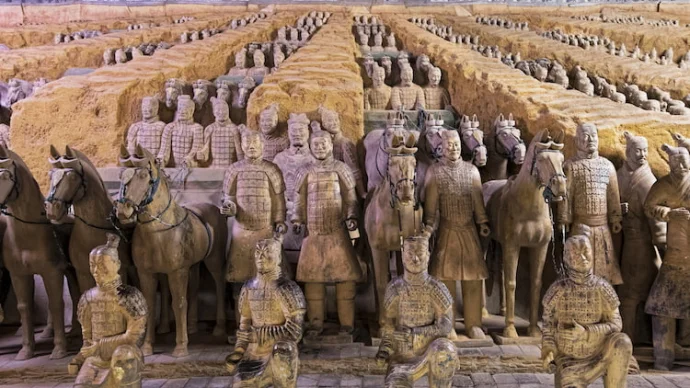About Yinxu
Yinxu or the ‘ruins of Yin’ in Anyang, China, is the site of the ancient capital of the late Shang Dynasty and the first site of a Chinese capital in history. Founded in approximately 1300 BC by the dynasty’s 20th king, Pan Geng, Yinxu would remain the capital for another 255 years.
Today, the vast site of Yinxu – a UNESCO World Heritage Site – still houses remains of the palace. Comprised of over 80 house foundations and the Tomb of Fu Hao, the only intact tomb of a member of the Shang Dynasty, Yinxu offers a fascinating insight into ancient Chinese history.
Yinxu history
Yin is described within surviving ancient Chinese historical documents as the last capital of the Shang dynasty that ruled China between 1766 and 1122 BC. Established by King Pan Geng, his successor Wi Ding launched numerous military campaigns from Yin against surrounding tribes. When the Shang was overthrown by King Wu of the Zhou dynasty, a new capital at Frenghao was established and Yin fell into ruin.
Yinxu was not rediscovered until the last years of the Qing dynasty around the turn of the 19th to the 20th century. The site was rich with oracle bones covered in ancient Chinese characters and created a market for them among antique collectors. This unfortunate appetite led to waves of illegal digs at the site located in the village of Xiaotun, confirmed in 1910 as the location of the former capital.
Since 1950, ongoing excavations led by the Institute of Archaeology at the Chinese Academy of Social Sciences have found significant remains of palaces, temples, royal cemeteries and bronze and bone workshops. At Yinxu, 4 historical periods have been identified between 1300 and 1046 BC during the city’s lifetime as the spiritual and cultural heart of the Shang reign.
Yinxu today
Open from 8am to 6.30pm, visitors can see the Exhibition Hall of Chariot Pits displaying the earliest examples of animal-driven carts in China – still accompanied by the remains of the horses that drew them. Additionally, the remains of a Shang Dynasty road are also on display, discovered in 2000 underneath a school.
However, by far the highlight of any trip to Yinxu is the royal Tomb of Fu Hao: resting place of the extraordinary Lady Hao, a military leader and wife of Shang King, Wu Ding. Discovered in 1976 and dated back to 1250 BC, the undisturbed tomb contained 6 dog skeletons and 16 human slaves along with other grave goods. The tomb has been excavated and fully restored for public viewing.
Getting to Yinxu
Located in Anyang in the Yindu District of China, Yinxu is found just off the S22 and S303 highways on the edge of the Anyang River. Yinxu is a 5 hour drive from Beijing via the G4 or 2 hours from Zhenzhou, Henan province’s capital. There is parking at the site.
Featured In

China Historic Sites
Discover China's rich history at these 10 sites across the country, from the ancient Terracotta Army to the birthplace of Mao Zedong.




















